The Origin of the S.C. National Guard
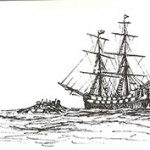
On the first Wednesday of April, three ships from England and the Caribbean sailed into what would become known as Charleston Harbor. Months earlier the Lords Proprietors had issued the Fundamental Constitutions requiring all male inhabitants and freemen of Carolina above the age of 17 and under the age of 60 to bear arms and serve as Soldiers to protect the colony.
Upon landing at Charles Towne, the settlers immediately went to work establishing homes, gathering food and building the colonies defenses. With matchlocks, flintlocks, muskets, swords, bandoliers, powder, shot and twelve suits of armor to outfit them, the forbears of the South Carolina National Guard became our State’s first Citizen-Soldiers.
S.C. Revolutionary War Hero Brig. Gen. Andrew Pickens is Born
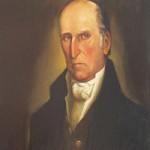
Pickens had many successes during his military career, but perhaps one of his most famous occurred early in the American Revolution on Aug. 11, 1776. While leading a party of 25 men through an old Indian field near Tamassee then Col. Andrew Pickens was attacked by 185 Cherokees. The Indians surrounded the patriots in a ring formation, typical of their style of warfare. Swift and skilled marksmanship by Pickens and his troops inflicted heavy casualties. Legend has it, a nearby cane-break was set afire, and as the moist reeds filled with steam and burst, they exploded with a loud popping noise that sounded like gunfire. The effect magnified the actual rifle fire and the remaining Indians fled in confusion.
Charles Cotesworth Pinckney is Born.

Artist: Henry Benbridge
Revolutionary War hero and S.C. Founding Father Charles Cotesworth Pinckney is born. Pinckney, a colonel in the S.C. Militia, was instrumental in planning the defense of Charleston prior to the British attack of Fort Moultrie on June 28, 1776. Soon after, he was appointed aide-de-camp to Gen. George Washington. Following America´s War for Independence, Pinckney served as a S.C. delegate to the constitutional convention. He also served in President John Adams administration. Pinckney ran as a candidate for president of the U.S. in both 1804 and 1808.
SC Militia Captures Fort Johnson
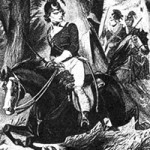
The citizens of Charles Towne awoke to find the South Carolina militia holding Fort Johnson, Charles Towne's primary outer-harbor defense work on James Island. The militia, acting on orders from the Committee of Safety, had crossed the harbor during the night and captured the contingent of British soldiers in the fort. They then hauled down the British flag and replaced it with the "Liberty" flag. With the raising of the Liberty flag, South Carolina committed herself to the American Revolution. Capt. Francis Marion, a member of the Provincial Congress and esteemed frontier warrior during the Cherokee War in 1761 was among those who captured the fort. He would later become known as "The Swamp Fox." Marion's superior guerilla-warfare tactics would contribute tremendously to Cornwallis' eventual departure from South Carolina in December 1782. Revered by S.C. National Guardsmen, many units still use the name "Swamp Fox" in their names or distinctive unit insignia and shoulder sleeve insignia to this day.
Moultrie Defeats the British
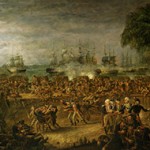
Adm. Sir Peter Parker's fleet of eleven ships of war sailed slowly toward what would later become known as Fort Moultrie. There, Col. William Moultrie had 435 men, 21 cannons of various sizes in place and a sparse 10,000 pounds of powder within his Palmetto log fort. With a shortage of ammunition, Moultrie told his men "make every shot count." Soon after, holes were visible in every ship within range. As the British observed the soft, flexible Palmetto logs absorb or repel a majority of their cannonballs, Sir Henry Clinton attempted to cross Breach Inlet to outflank Moultrie and his men. However, Col. William Thompson's 300-strong Third Regiment of S.C. Rangers, 200 North Carolina Continentals, 200 S.C. state troops and 80 Waccamaw, Catawba, Peedee and Cheraw Indian riflemen were waiting on Clinton behind some breastworks they had constructed. Moultrie and Thompson's actions resulted in our S.C. Citizen-Soldiers handing the British their first defeat in the South. It also demoralized British loyalists in South Carolina who would have to wait nearly four years before British forces returned in strength to reattempt an invasion of Charles Towne. Year later, the S.C. Legislature would forever memorialize this victory on a blue S.C. State Flag adorned with a Palmetto Tree and the same type of crescent Moultrie and his men wore on their einthercaps in 1776.
Thomas Sumter's Victory
For the first time Lt. Col. Banastre Tarleton´s British forces are stopped by S.C.'s Citizen-Soldiers during the American Revolution. Having had two days to properly prepare for battle, Thomas Sumter positioned Henry Hampton's S.C. riflemen at the main buildings of Blackstock Plantation in Union County supported by riflemen from Georgia. He himself occupied the ridge across the road. As Tarleton's forces advanced late in the afternoon without support from his artillery, Tarleton decided to order an all-out attack on Sumter's left flank. Unknowingly, as his British forces advanced, they marched right into the trap Sumter had set for them. Hampton's riflemen began picking off the Redcoats from their right flank as Sumter ordered his riflemen to attack Tarleton's cavalry in the woods to his right. Tarleton lost nearly a third of his advance force killed or wounded and as he lamented to Cornwallis later, he had taken losses that he could not replace.
SC Natives Sign the Constitution
South Carolina's John Rutledge, Charles Cotesworth Pinckney, Charles Pinckney and Pierce Butler sign the Constitution of the United States. All but Rutledge, who was elected Governor of S.C. in March 1776, had served in the S.C. Militia before or during the American Revolution.
The First S.C. Legislature Session
The first session of the S.C. Legislature meets in Columbia. Among the delegates is one of South Carolina's most famous Citizen-Soldiers, Brig. Gen. Francis "The Swamp Fox" Marion, who was elected to the State Senate and helped to write the Constitution of the State of South Carolina.
Col. Pierce Mason Butler is Born
Col. Pierce Mason Butler is born in Edgefield District. A former commander of the S.C. Mounted Volunteers during the Second Seminole War, Butler became governor of S.C. on Dec. 19, 1836. After one term in office, Butler was appointed federal agent to the Cherokees by President John Tyler. At the outbreak of the Mexican War in 1846, the former S.C. Governor was appointed colonel and commander of the Palmetto Regiment. On Aug. 20, 1847, while leading his troops at Churubusco, Butler received a wound to his leg. Refusing to leave his men, he was killed by a musket ball to the head just minutes later.
Establishment of the WLI
The Washington Light Infantry (WLI) is established in Charleston following the Chesapeake-Leopard Affair a month earlier on June 22. The event raised tensions between the U.S. and Great Britain leading up to the War of 1812. "Remember the Leopard" became the unit´s rallying cry. WLI Soldiers fought in six wars and was one of the S.C. National Guard´s oldest and most prestigious military units until it was decommissioned from active military service in July 1967.
Jackson Defends New Orleans
Maj. Gen. Andrew Jackson, a former S.C. Citizen-Soldier during the American Revolution, leads a combined force of Army Regulars, volunteer militia from several states, pirates and others in his successful defense of New Orleans from an invading British Army in the last act of the War of 1812. Jackson was born and raised in what is today known as Lancaster County, S.C.
Brig. Gen. Gist is Born in Union
Brig. Gen. States Rights Gist is born in Union. After establishing a law firm in 1853, Gist began his military career later that year as a captain commanding the Johnson Rifles. The following year, he was appointed aide-de-camp to S.C. Governor James H. Adams with the rank of lieutenant colonel. In 1856, at age 24, Gist was elected brigadier general, commanding the Ninth Brigade. In January 1861, Governor Francis W. Pickens appointed Gist to the state's Adjutant General post. Later in the year, he would serve under Brig. Gen. Bernard E. Bee at the Battle of First Manassas. Bee was mortally wounded and Gist took command. From March 1862 to May 1863, Gist served in the defense of Charleston. Until his death at the Battle of Franklin on Nov. 30, 1864, Gist led an infantry brigade during the Vicksburg Campaign, the battles of Chickamauga and Chattanooga and throughout the Atlanta Campaign.
The Alamo in San Antonio
After a determined defense lasting 13 days, The Alamo, in San Antonio, Texas, falls to Mexican President/General Santa Anna. The defenders, estimated to number about 189 men, are killed. Included in this force are seven Citizen-Soldiers born in the Palmetto State. These include The Alamo's commander Lt. Col. William Barrett Travis, 1st Lt. Cleveland Kinloch Simmons, 2nd Lt. James Butler Bonham, Pvt. Lemuel Crawford, Pvt. George Neggan, Pvt. Edward Nelson and Pvt. George Nelson. According to Santa Anna's personal secretary, the Mexican army suffered 1,544 killed and almost one thousand more wounded. Santa Anna called it a "victory" but in response, one of his senior commander's was reportedly heard to say "one more victory like this and we are finished."
Civil War Begins in Charleston
Gen. P.G.T. Beauregard orders all Confederate artillery batteries around Charleston harbor to open fire on Fort Sumter. Two hours later, Abner Doubleday fires the Union's first shots of the war at Fort Moultrie in response. The Sumter Guards (depicted in this painting) scored several hits to Ft. Sumter's magazine and parapet while supporting the Marion Artillery at Ft. Johnson during our nation's first Civil War battle on Apr. 12-13, 1861. The Sumter Guard's protected Charleston throughout the war. During our nation's tragic civil war, S.C. provided 35 infantry regiments, seven cavalry regiments and two artillery regiments. Sadly, of the 60,000 sons of S.C. who went off to fight, only 40,000 returned home to their families.
The Queen of the Confederacy
South Carolina's famed Holcombe Legion, named after Lucy Holcombe Pickens (The Queen of the Confederacy), is baptized by fire in the American Civil War at Edisto. Commanded by Col. Peter F. Stevens, who resigned as president of The Citadel to form the Holcombe Legion, the unit lands at Edisto before day-break and captures a Union lieutenant and 20 men at the main bridge to the island. Losses during the skirmish are light with seven Federal Soldiers killed or wounded.
Pickens, who was said to be the most beautiful woman of her time, was featured on several denominations of Confederate currency during our nation's tragic civil war. Following the war, she spent most of her personal fortune helping disabled veterans and erecting monuments to their valor.
Kershaw Defeated at Gettysburgh
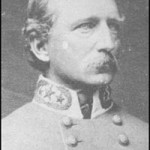
A day after S.C. troops proudly became the first to raise their colors in the small town of Gettysburg, Pa., tragedy would befall the S.C. brigade of Camden's Brig. Gen. Joseph B. Kershaw. Forming the right of McLaw's division, Kershaw was ordered by Lt. Gen. James P. Longstreet of Edgefield to attack Union forces at the peach orchard which had three Union batteries stationed at a rocky hill near it and three more positioned 200 yards behind it. Marching forward for 500-yards under the fire of Union canister and infantry fire from the south side of the peach orchard, Kershaw's brigade takes their objective. Union forces immediately advance over the open wheat-field ahead of them in two lines of battle. To his left, the Confederate line holds but to his right, a large Union force assaults and quickly pushes his force there back at a right angle and to his rear. Suddenly, Brig. Gen. William T. Wofford comes up to charge the Union forces on his right and Kershaw is able to sweep his brigade forward through the wheat-field to the foot of the base of Little Round Top. During the gallant fight, Kershaw´s brigade lost 115 killed, 483 wounded and 32 missing, making a total of 630 (approximately half of the men he took into battle). At dusk, the S.C. troops could see the Federal army firmly entrenched on the heights above. The following day's battle at Gettysburg would prove to be the turning point for the North in the American Civil War.
Reconstruction Era Ends in SC
President Rutherford B. Hayes orders federal troops to withdrawn from Columbia effectively ending the "Reconstruction Era" of South Carolina's history. Former Confederate Gen. Wade Hampton is officially recognized as South Carolina's Governor and S.C. National Guard units such as the Sumter Light Infantry (pictured) begin actively meeting and training again.
USS Maine Sinks in Havana
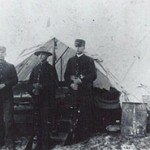
Havana Harbor, Cuba - The USS Maine explodes, killing 260 American Sailors. The reason for this explosion is still questioned today, though most experts now feel it was an accident. Cuba was a Spanish colony, with rebels fighting to win their independence from colonial rule. Many Americans supported the Cubans in their goal of freedom. The Maine was sent as a "good will" gesture by the U.S. toward Spain. When it suddenly blew up in a Spanish controlled port, the newspapers blamed the Spanish for sabotaging the ship. The outcry for revenge finally led America to declare war against Spain on April 25. South Carolina Citizen-Soldiers such as these pictured from the S.C. Volunteer Artillery in Charleston helped man Batteries Jasper and Capron at Ft. Moultrie during the war. The unit was one of many S.C. Militia organizations which volunteered to fight during the war. In all, 2,500 S.C. Citizen-Soldiers answered our nation's call to service. In May 1898, President William McKinley appointed S.C. Civil War veteran, Maj. Gen. Matthew Calbraith Butler commander of volunteer forces in the Spanish-American War. As a member of the Cuban Peace Commission, Butler oversaw the evacuation of Spanish troops from the island.
The Millitia Act
The Militia Act, sponsored by Rep. Charles Dick, R-Ohio, is enacted. It was benchmark legislation repealing the outdated Militia Act of 1792. With its passage, the modern National Guard, as part of the Federal Reserve, was born. The Guard now had to meet stricter federal requirements for training and equipment, though now the government paid most of the bills. The Guard's officer corps would be required to be "federally recognized"-certified as to physical, professional and moral standards. Its enlisted personnel would also have to obtain higher standards than under the old militia period. All ranks would get pay and allowances for their attendance at a five-day summer encampment. Eventually, federal monies for all training periods, annual and drill would be added as well as monies for armory construction and maintenance. Many aspects of "Guard service" as it is understood today date from the passage of the Dick Act of 1903.
The 228th Signal Brigade
The proud history of the 228th Signal Brigade begins as Company I (Hampton Guards), 1st Regiment of Infantry in Spartanburg. The unit's first deployment was in 1916 for the Mexican Border mission. It fought in World War I, earned combat credits in World War II and numerous units within the Brigade have since served in the Global War on Terrorism.
SC Guard Defends Mexican Border
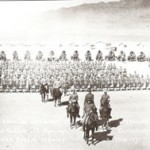
Along the Mexican Border - The War Department issues orders for some National Guard units to begin preparations to return home. In May President Woodrow Wilson had mobilized most of the National Guard of the U.S. along the border areas of Calif., Ariz., N.M. and Texas. The effort was to prevent Mexican bandits, led by Pancho Villa, from raiding U.S. territory (as they had in March when they stormed into Columbus, N.M., killing several civilians and Soldiers). World War I had started in Europe in the summer of 1914, so by the time of the Mexican Border call up, the war had been raging for two years. America had thus far remained neutral but many people, especially in the Army, felt our involvement was inevitable. So while guarding the border, the Army used the time to conduct large-scale, multi-division sized field exercises not usually available to Regular Army or Guard units. Guardsmen from the S.C. National Guard's Palmetto Regiment found themselves training in trenches like those they saw in newsreels from the Western Front in France. Two years later, the men of the 118th Infantry Regiment would find themselves relieving what remained of the 1st Australian Division in the Gouy-Naroy Sector in France, the strongest part of the Hindenburg Line.
Dozier and the 118th Infantry
After assuming command of G-Company, 118th Infantry at Montbrehain, Lt. James C. Dozier's unit came under attack by six German machinegun crews in advance of their line. Although wounded, Dozier signaled his men to take cover. Utilizing one of his machinegun crews to provide cover fire, Dozier outflanked and silenced the six German positions with grenades and his pistol. He and G-Company also captured 470 Germans during the battle. After receiving the Medal of Honor, Dozier's achievement was selected by the government as one of the 12 most remarkable exploits during World War I.
Dozier Sworn in as TAG
World War I Medal of Honor recipient James C. Dozier is sworn into office as The Adjutant General of S.C. following the unexpected death of Robert E. Craig during a National Guard Association of the U.S. conference in St. Augustine, Fla. Dozier would serve another 33 years as the Adjutant General. He is credited for rebuilding the S.C. National Guard between the world wars and great depression. He is also responsible for saving Fort Jackson by accepting custody of the facility from the War Department shortly after being sworn in. He was successful in providing work for the unemployed, as well as providing work space for his fellow Guardsmen, when he persuaded the Works Progress Administration to build 38 new armories.
The 263rd Defends Charleston
Due to German U-boat threats all along the east coast of the U.S., the 263rd Coast Artillery is ordered to active duty to protect Charleston Harbor. The unit serves at Fort Moultrie prior to and following Germany's declaration of war with the U.S., after the Japanese attack on Pearl Harbor later in the year.
107th Battalion Engages Enemy
Battery C, 107th Separate Coast Artillery Battalion of the S.C. National Guard engages enemy aircraft for the first time defending the Maison Blanche Air Field in Algiers. During their two months there, they are credited for destroying four enemy aircraft. Originally recognized as the "Newberry Rifles" (who formed in 1876), the unit is known today as Headquarters Company, 218th Maneuver Enhancement Brigade. Its deployment to Afghanistan in 2007 (during the Global War on Terrorism) was the largest deployment of S.C. troops since World War II.
Victory in Europe Day
American forces celebrate Victory in Europe Day following Germany's surrender to Allied forces. The S.C. National Guard provided 3,671 Soldiers for World War II. Pictured are S.C. National Guard 178th Field Artillery Battalion executive officer Maj. Hugh Knight (left) and the unit´s aerial observer 1st Lt. Archie "Red" Rogers (right).
During the war, the 178th was often called upon for the toughest missions supporting General Mark W. Clark's 5th Army forces. The 178th had an unsurpassed 630 days of combat including 249 consecutive days in the line while serving in the European Theater of Operations. From the battalion's initial baptism to fire in North Africa during the Tunisian Campaign -- to firing the first allied artillery rounds during the invasion of Europe -- to the unconditional surrender of German forces in Italy following the Po Valley Campaign on May 8, 1945, the battalion fired 155,142 rounds from their towed 155 mm howitzers. They also occupied 89 different firing positions throughout Tunisia, Sicily and Italy.
Air Force separates from Army
The South Carolina Air National Guard, located at McEntire Joint National Guard Base, is home to the 169th Fighter Wing which includes the 169th Operations Group, 157th Fighter Squadron, the 169th Maintenance Group, 169th Mission Support group, and the 169th Medical Group, as well as the 245th Air Traffic Control Squadron.
Air Defense During the Korean Conflict
Battery D, 713th Anti-Aircraft Artillery Gun Battalion of Florence is ordered into active federal service and deployed to the Chicago area to serve as part of the nation's Continental Air Defense during the Korean Conflict.
James C. Dozier Retires as TAG
Maj. Gen. James C. Dozier, a Medal of Honor recipient from World War I, retires from the S.C. National Guard as the longest serving Adjutant General (TAG) in the history of S.C. During his 33 years as TAG, Dozier became known throughout the country as "Mr. National Guard." He is credited for helping to save Camp Jackson (later Fort Jackson) following World War I and expanding it throughout the Great Depression leading up to World War II. He also grew the S.C. National Guard's budget from $118,812.00 (1926), to $6,230,159.62 (1959). During a time when armory utilities, maintenance and operation were a much smaller portion of the Guard's budget, "Mr. National Guard" had accomplished - what was considered at the time - the greatest and most permanent achievement ever accomplished during the term of office of any Adjutant General, the construction of permanent armories throughout the state.
Congaree Air Base is renamed
The Congaree Air Base is renamed McEntire Air National Guard Base by Governor Ernest F. Hollings in honor of Brigadier General Barnie B. McEntire, Jr. BG McEntire was the first commander of the South Carolina Air National Guard and its first general officer. He died on 25 May 1961 while attempting to land his malfunctioning F-104 in the Susquehanna River to not only avoid crashing into a populated area but to also save the airplane so the engine flameout could be investigated to determine the cause for multiple previous flameouts among the F-104 fleet.
CPT Richard Belton "Dicky" Brockman
Palmetto Military Academy graduate CPT Richard Belton "Dicky" Brockman, originally from Reidville, South Carolina, is killed in action when the UH-1 Iroquois (Huey) he was piloting crashed after losing its main rotor which then impacted and chopped up the tailboom. He was returning to Cu Chi from a resupply mission. CPT Brockman, born on 31 December 1966, was a member of the SCARNG before volunteering for a tour of duty in Vietnam, and a plaque in his honor is on display at the JAFRC, McEntire Joint National Guard Base.
The 218th Graduates First Class
The S.C. National Guard's 218th Leadership Regiment graduates its first Non-Commissioned Officer (NCO) Academy class. Of the 71 cadets who began their training on Jan. 31, 62 complete the course which was held at the Palmetto Military Academy facilities located at the Olympia Armory in Columbia. According to the regulation establishing the NCO Academy on Oct. 10, 1969, its mission is "to train Non-Commissioned Officers and Specialists in the grades E5 through E7, as leaders and supervisors."
SCANG Swears in First Females
The S.C. Army National Guard swears in its first females. 1st Lt. Bonnie Morse and Spc. Ramona Swails join the 132nd Medical Company in Darlington following a swearing-in ceremony led by S.C. Adjutant General Robert L. McCrady.
51st Aviation Company
Soldiers from the 51st Aviation Company wrap up four days of state active duty following Operation Snow which was declared by Governor John West on Feb. 9. A severe snow storm caused about 30,000 motorists to be stranded on highways around the state. Over 50 aviation officers and enlisted men with eight helicopters assisted civil authorities in identifying stranded motorists. Food, medicine and various other items were supplied in isolated areas by the crews. The town of Rimini saw the greatest total snowfall at 24 inches.
Troop Command Becomes Headquarters
Troop Command becomes federally recognized as Command and Control Headquarters for the S.C. National Guard.
The Gamecock Artillery
After several re-designations throughout the 1900s, the 151st Field Artillery Group finally becomes the 151st Field Artillery Brigade. The "Gamecock Artillery" would keep this designation until the casing of their colors in August 2008. During the storied history of the unit, which dates back to 1877 when the Sumter Light Infantry formed in Sumter, the unit served during the Mexican Border mission from August 5, 1916 to March 16, 1917, World War I, World War II and Operation Iraqi Freedom.
Maj. Gen. Robert L. McCrady
Changed rank to Maj. Gen. (TAGs are promoted to LTG by the State upon retirement but it isn't Fed Rec per G1)
Maj. Gen. Robert L. McCrady, the namesake of the S.C. Army National Guard's McCrady Training Center, dies. McCrady, who served two terms as The Adjutant General of S.C. (Jan. 19, 1971 - Jan. 9, 1979), was instrumental in growing the Guard's training center at Fort Jackson throughout his career. McCrady joined the S.C. Army National Guard as a private on Apr. 14, 1937, and received his commission as a second lieutenant of Coast Artillery in Jan. 1941. He was a veteran of World War II and worked his way up to Assistant Adjutant General before his successful election to head the state's Military Department on Nov. 3, 1970.
The 178th Field Artillery Battalion
Representing the National Guard of the United States, the 3rd of the 178th Field Artillery Battalion marches in President Ronald Reagan's Inaugural Parade. The honor was given to the unit as a reward for their excellent representation of the National Guard of the United States during the previous Fall's REFORGER ´80 exercises in Germany. There, the unit proved the National Guard's ability to rapidly deploy combat forces in support of an Allied mission with U.S., British and West German troops. Their performance drew the praise of the United States Army Chief of Staff. As a result of their efforts, the unit was awarded the Governor's Unit Citation.
Hurricane Hugo response
Just after midnight on September 22, 1989, Hurricane Hugo made landfall just north of Charleston, South Carolina at Sullivan's Island as a Category 4 storm. The massive hurricane leveled beachfront properties and toppled trees, leaving much of the coastal areas in ruin, with 13 South Carolina lives lost. In the days and weeks that followed, more than 6,300 S.C. National Guard Soldiers were mobilized to assist with response and recovery efforts.
The 169th in Desert Storm
Washington, D.C. - President George H.W. Bush extends the initial mobilization of all Reserve Component units called in support of Operation Desert Shield from 90-days to 180-days (soon to be increased to 360-days) as the mission changes from defending Saudi Arabia from Iraqi invasion to compelling the Iraqi Army to withdraw from Kuwait. Along with this announcement came his decision to send an additional 200,000 troops (all branches) to the Southwest Asia theater. As the American build up of forces in Saudi Arabia changed from defensive to offensive, the Air Force deployed two Air Guard fighter units, both flying F-16 "Flying Falcon" fighters. These were South Carolina's 169th Tactical Fighter Group and New York's 174th Tactical Fighter Wing.
911 and the SC Guard
Terrorists fly highjacked airliners into both towers of the World Trade Center in New York City, and the Pentagon outside Washington, D.C. The S.C. Air National Guard is alerted and helps to secure the skies over S.C. Soon after the S.C. Army National Guard is alerted to begin securing military and high-priority infrastructure targets around the Southeast. As of January 2017, over 19,000 Soldiers and Airmen from the S.C. National Guard have been called upon to serve in our nation's Global War on Terrorism.
Oscar Marion Finally Recognised
Oscar Marion (left), an African-American patriot, lifelong friend and personal assistant to Brig. Gen. Francis Marion before and during the American Revolution, is finally given post Revolutionary War recognition. His family receives the honor during a presidential proclamation service hosted by President George W. Bush at the U.S. Capitol in Washington. Oscar was one of the most notable and best-known among "Marion's Men," having served as the general's personal assistant, sous chef, bugler, oarsman and, of course, fighter. The slave-turned-S.C. Citizen-Soldier waged successful guerrilla warfare against British troops, and unlike other slaves owned by Francis Marion's family, who left and served with the loyalists, Oscar deliberately chose the path of patriotism.
1,113 S.C. National Guard Soldiers returns home from the Operation Jump Start
The last of 1,113 S.C. National Guard Soldiers returns home from the Operation Jump Start mission in Arizona. During the three-month deployment, Soldiers, including those from the 351st Aviation Support Group, 151st Field Artillery Brigade, 218th Separate Brigade (Enhanced), 111th Signal Battalion, and the 2-263rd Air Defense Artillery Battalion helped the U.S. Border Patrol apprehend 1,512 illegal aliens and deter another 347. The 751st Maintenance Battalion improved the fully-mission-capable status of 305 Border Patrol vehicles from 70 percent to over 90 percent. The Soldiers of the 122nd Engineer Battalion also fabricated and installed 161 vehicle barriers in Sasabe, completed 2,575 meters of border road in San-Miguel and improved 2,000 meters of border road at Menager's Dam. The activation of South Carolina's OH-58 Kiowa 2-151 Aviation assets to the region also resulted in 1,000 apprehensions and the seizure of 2,500 pounds of marijuana.
Maj. Gen. Spears Dedicates Museum
The new S.C. Military Museum on 1225 Bluff Rd. in Columbia is dedicated by Maj. Gen. Stanhope S. Spears, The Adjutant General (TAG) of S.C., in honor of all the men and women who have served in the S.C. National Guard since Apr. 2, 1670. Spears, who has commanded the S.C. National Guard throughout the Global War on Terrorism, began serving as TAG in 1994. He is one of the longest serving TAGs in the history of the S.C. National Guard.
The 218th MEB deploys in support of War on Terror
Throughout our nation's Global War on Terrorism, the S.C. National Guard's 218th Maneuver Enhancement Brigade has been deploying to locations both at home and abroad to protect the homeland and fight our nation's enemies. Beginning in 2003, the brigade began deploying embedded training teams overseas to Afghanistan. In 2008, the 218th 1,600-strong force re-deployed home following a year-long mission to train the Afghan police force and advise Afghan security forces. Their mission marked the single largest deployment of S.C. Guardsmen since World War II.
The Last Gray AH-64 Apache
The last gray AH-64 Apache departs McEntire Joint National Guard Base in Eastover. The S.C. National Guard's gray Apaches were the only experimental paint scheme authorized by the Army for use on the Apaches during the Global War on Terrorism. The 1st of the 151st Air Reconnaissance Battalion (ARB) flew 14 of them in combat from 2004 to 2005. Their color made it more difficult for insurgents on the ground to see them coming. The grey Apaches also proved to be easier to repair because the experimental color made the skin temperature about 20-30 degrees cooler than the standard Army green paint scheme.
Myrtle Beach Wildfires
Responding to the worst wildfire to strike South Carolina in 30 years, S.C. Governor Mark Sanford declares a state of emergency. Within two-hours of notification, a S.C. National Guard UH-60 Black Hawk crew is in Myrtle Beach ready to support the Forestry Commission. Working with four other Black Hawks crews from N.C., the Guardsmen drop over 904,000 gallons of water, totaling over 93 flight hours during the seven-day mission.
South Carolina Helicopter Aquatic Rescue Team (SC-HART),
The South Carolina Helicopter Aquatic Rescue Team (SC-HART), a hybrid team of Rescue specialist from the S.C. Urban Search & Rescue Task Force 1 and Pilots and Air crewmen from the S.C. National Guard 2nd Battalion, 151st Aviation Unit from McEntire Joint National Guard Base, is formed.
MG Livingston becomes TAG
Maj. Gen. Robert E. Livingston, Jr., assumes the role as The Adjutant General of South Carolina at a ceremony in Columbia, South Carolina, Jan. 7, 2011.
Establishment State Partnership with Colombia
State Partnership Program (SPP) between the Republic of Colombia and the state of South Carolina was formally begun via a signed partnership proclamation on July 23, 2012. Support and engagements continue as Colombia continues Transformation process towards peace. The SPP between the S.C. National Guard and Colombia continues to expand and develop. The SPP provides support to the Colombia Security Cooperation Organization (SCO) in the areas of Rotary Wing and Ground Vehicle Maintenance, Air Defense, Foreign Military Sales Support, Humanitarian Assistance Disaster Relief, Rule of Law, Military Transformation and Key Leader Engagement
South Carolina Flood Response
South Carolina was impacted by an epic weather event, called the “1,000 year flood” from Oct. 1-5, 2015.
South Carolina was impacted by an epic weather event, called the “1,000 year flood” from Oct. 1-5, 2015 when 11 trillion gallons of rain water impacted Carolinas. 19 S.C. Citizens lost their lives, mostly due to traffic accidents and flood water related incidents on roads.
First S.C. national Guard missions executed 3 OCT with more than 390 Soldiers mobilized to fill and transport 13,500 sandbags to 8 counties.
On 4 OCT, 700 S.C. National Guard personnel including swift water rescue assets from VA, TN and GA prepositioned for life saving response.
Early Afternoon 4 OCT, S.C. Helicopter Aquatic Rescue Team (SC-HART) conducts 25 hoist rescues/lives saved in first 4 hours in Midlands. From OCT 3- NOV 15, the S.C. Military Department executed flood response operations, peaking between 8-11 OCT with over 4,100 personnel on the ground.
Hurricane Matthew response
More than 2,900 S.C. Army National Guard Soldiers, 50 S.C. Air National Guard Airmen and 90 State Guard mobilized to assist in evacuations, security operations, logistics, sandbags, engineer assets and recovery support in response to Hurricane Matthew. From October 5- Nov, 2, 2016-- At peak of operations, more than 2,900 S.C. Army National Guard Soldiers, 50 S.C. Air National Guard Airmen and 90 State Guard mobilized to assist in evacuations, security operations, logistics, sandbags, engineer assets and recovery support in response to Hurricane Matthew. The storm came ashore Oct. 8 bringing heavy rain and wind in Georgetown County as a category 1 hurricane and heavily impacted the coast with downed trees and flooding.
Pinnacle Mountain Wildfire response
The S.C. Army National Guard provided a Black Hawk and Lakota helicopter along with 2 Chinook helicopters with air crews to support the Pinnacle Mountain Wildfires in Pickens County, S.C. The S.C. Army National Guard provided a Black Hawk and Lakota helicopter along with 2 Chinook helicopters with air crews to support the Pinnacle Mountain Wildfires in Pickens County, S.C. dropping nearly 3 million gallons of water in support of the Forestry Commission from Nov 9-29 2016. The wildfire burned over 10,000 acres.
Hurricane Harvey
The S.C. National Guard responded to Hurricane Harvey, a category 4 hurricane that came ashore Aug. 25th near Rockport, Texas. The SC-HART (South Carolina Helicopter Aquatic Rescue Team) departed for Texas Aug. 29th, supporting search and rescue operations in heavily flooded areas around Houston. They saved 4 civilians, including a 7 week old baby who had medical needs. They returned Sept. 4. The SC-HART (South Carolina Helicopter Aquatic Rescue Team) departed for Texas Aug. 29th, supporting search and rescue operations in heavily flooded areas around Houston. They saved 4 civilians, including a 7 week old baby who had medical needs. They returned Sept. 4.
Hurricane Irma
The S.C. National Guard supported the state of South Carolina during Hurricane Irma, a category 5 storm that came ashore in the Florida Keys and tracked a course as a category 3 then 2 storm along the western coastline of Florida, Sept. 9. Approximately 800 Soldiers and Airmen and 80 State Guard members were initially mobilized to respond to Irma. Highlights include distribution of 3,600 sandbags, MREs and assisting security with law enforcement agencies in the low country and other facilities. Soldiers in the 4-118th Infantry assisted with high water vehicles transporting hospital personnel during shift change with flooded streets at Roper St. Francis Hospital and high water vehicles helping residents in Bluffton and surrounding areas. Approximately 650 Soldiers were mobilized from the 1-118th Infantry with support assets to support Florida’s recovery efforts Sept. 12 where they established and supported supply distribution points in Hillsborough County, Florida and returned September 18.
Hurricane Maria
The S.C. National Guard deployed over 150 Engineer Soldiers from the 178th and 122nd Engineer Battalions to Puerto Rico Oct. 1 in support of Hurricane Maria recovery efforts, a category 5 storm that struck the island. After clearing over 150 miles of roads from debris to open access routes for supplies and services, they returned in different groups Nov. 2nd and 9th.
Eighteen Airmen assigned to the South Carolina Air National Guard’s 245th Air Traffic Control Squadron departed Nov. 5 for Puerto Rico to assist in the hurricane relief missions after Hurricane Maria. Airmen began arriving home in groups beginning Nov. 25th.
Army Aviation Task Force with approximately 10 Soldiers depart Oct. 24th for Puerto Rico to assist in aviation operations for Hurricane Maria recovery. Soldiers began arriving home Nov. 24th.